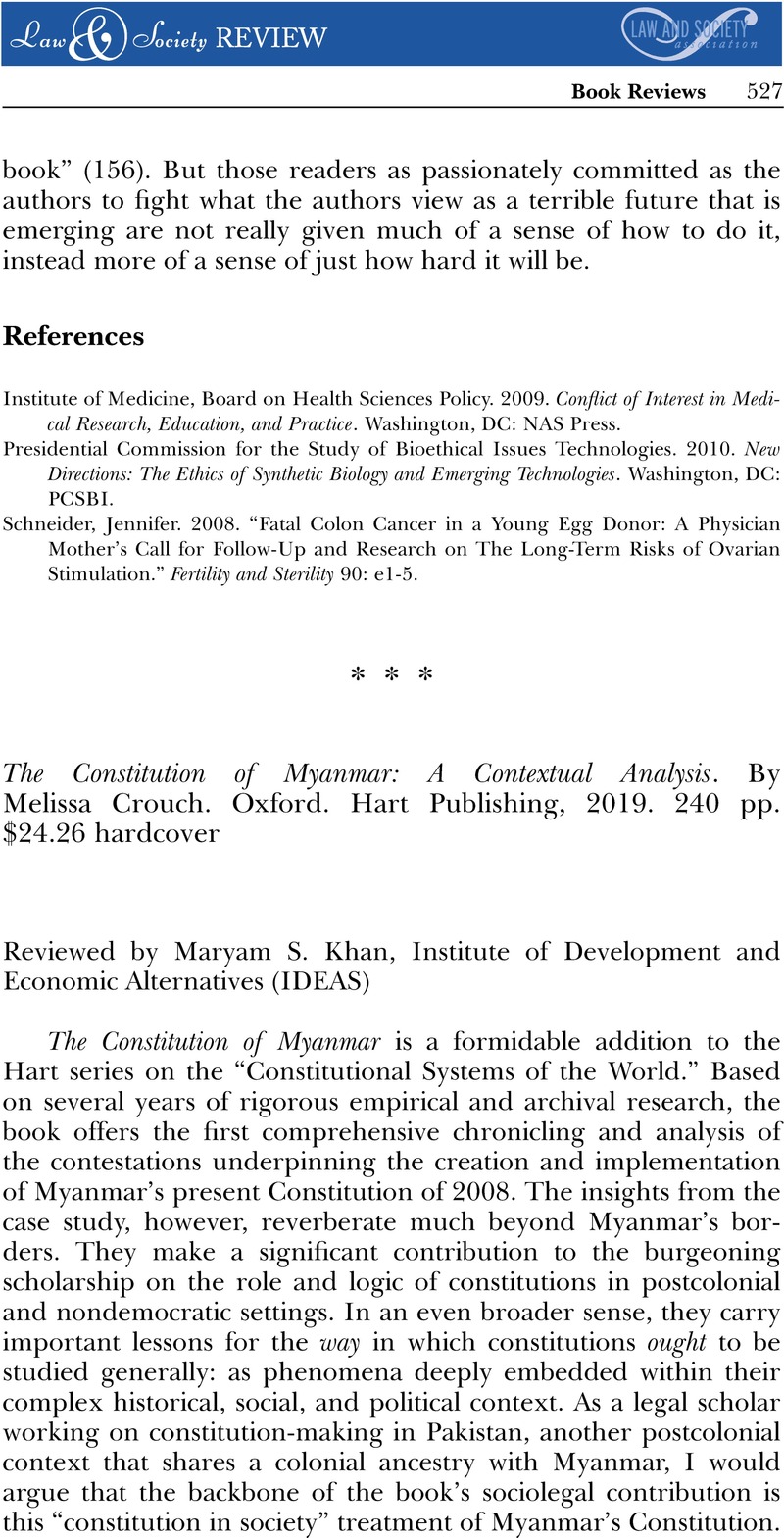No CrossRef data available.
Article contents
The Constitution of Myanmar: A Contextual Analysis. By Melissa Crouch. Oxford. Hart Publishing, 2019. 240 pp. $24.26 hardcover
Review products
The Constitution of Myanmar: A Contextual Analysis. By Melissa Crouch. Oxford. Hart Publishing, 2019. 240 pp. $24.26 hardcover
Published online by Cambridge University Press: 01 January 2024
Abstract
An abstract is not available for this content so a preview has been provided. Please use the Get access link above for information on how to access this content.

- Type
- Book Reviews
- Information
- Copyright
- © 2020 Law and Society Association.
References
Khan, Maryam S. 2019. “What's in a Founding? Founding Moments and Pakistan's ‘Permanent Constitution' of 1973.” In Founding Moments in Constitutionalism, edited by Richard Albert, Menaka Guruswamy, & Nishchal Basnyat. England: Bloomsbury Publishing.CrossRefGoogle Scholar


